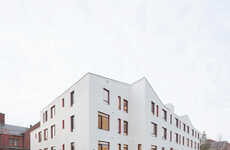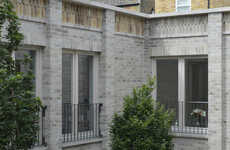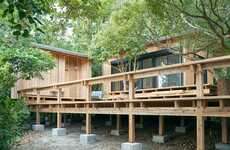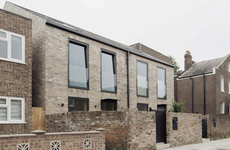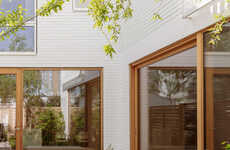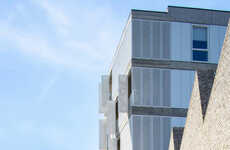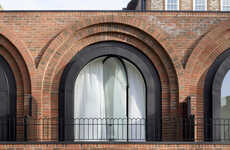
This Communal Cohousing Development is the First in London, England
Alyson Wyers — October 4, 2014 — Art & Design
Henley Halebrown Rorrison recently designed London's first cohousing development. Called 1-6 Copper Lane, the project involved designing six houses that shared communal space.
Using untreated timber and pale bricks, the studio built entirely new homes. The abodes are for a group who combined their money to live there. Architect Ken Rorrison explained the cohousing development is an example of the individual pieces coming together to be more than the sum of their parts.
The project began when two homeowners spotted the land for sale and asked others to join them in purchasing it. They formed a company to develop the land that "would not have been commercially viable at the scale we were doing it for a developer" explained Copper Lane Group's Simon Bayly.
Using untreated timber and pale bricks, the studio built entirely new homes. The abodes are for a group who combined their money to live there. Architect Ken Rorrison explained the cohousing development is an example of the individual pieces coming together to be more than the sum of their parts.
The project began when two homeowners spotted the land for sale and asked others to join them in purchasing it. They formed a company to develop the land that "would not have been commercially viable at the scale we were doing it for a developer" explained Copper Lane Group's Simon Bayly.
Trend Themes
1. Cohousing Developments - Disruptive innovation opportunity: Explore sustainable and collaborative housing models that combine individual homeownership with shared communal spaces.
2. Untreated Timber Construction - Disruptive innovation opportunity: Develop innovative building materials and techniques that prioritize sustainability and natural aesthetics.
3. Community-led Development - Disruptive innovation opportunity: Create platforms and resources for individuals to come together and collectively invest in land development projects.
Industry Implications
1. Architecture and Design - Disruptive innovation opportunity: Develop alternative residential design strategies that promote shared resources and social cohesion.
2. Construction and Real Estate - Disruptive innovation opportunity: Establish new business models that cater to the demand for sustainable and community-focused housing developments.
3. Collaborative Economy - Disruptive innovation opportunity: Build platforms and frameworks that facilitate collaborative investments and co-ownership opportunities in real estate.
3.7
Score
Popularity
Activity
Freshness


